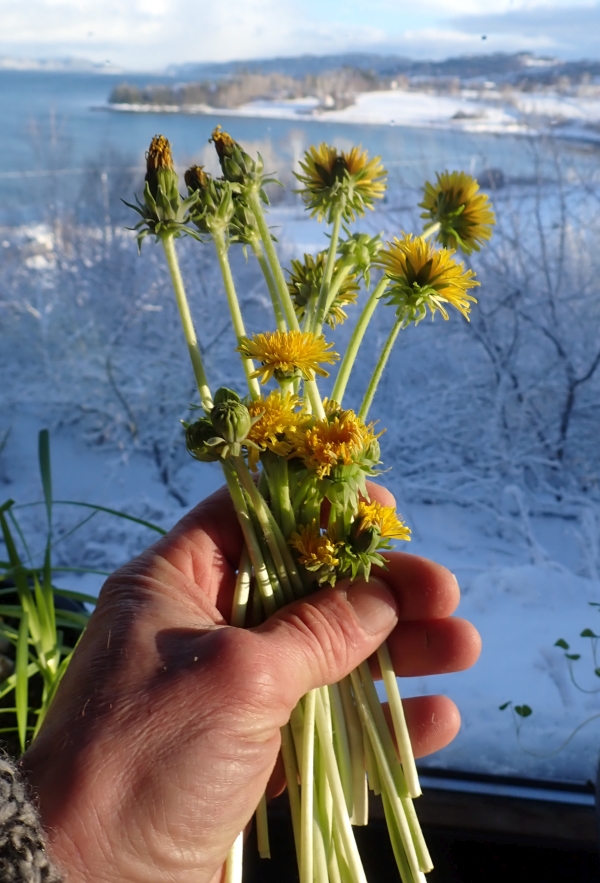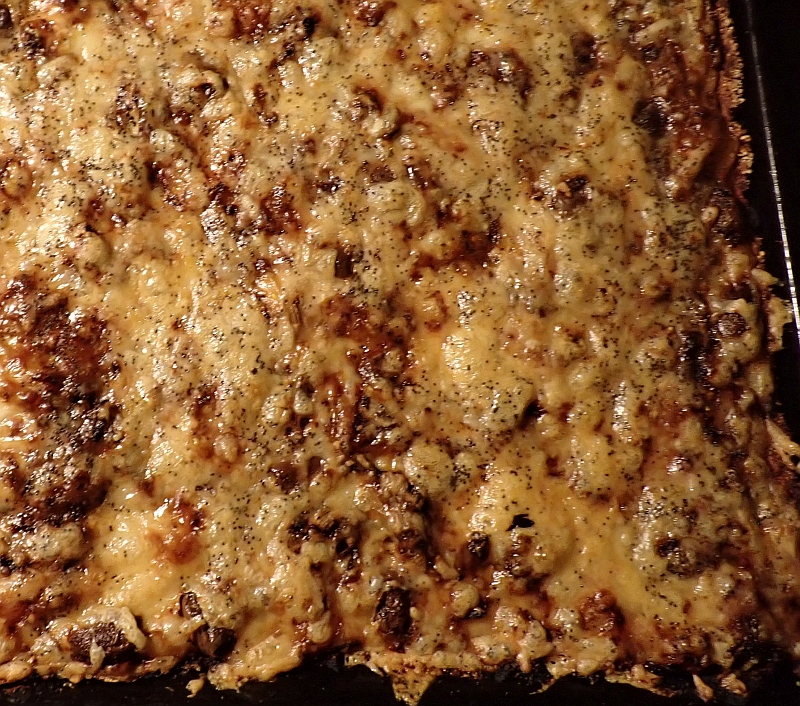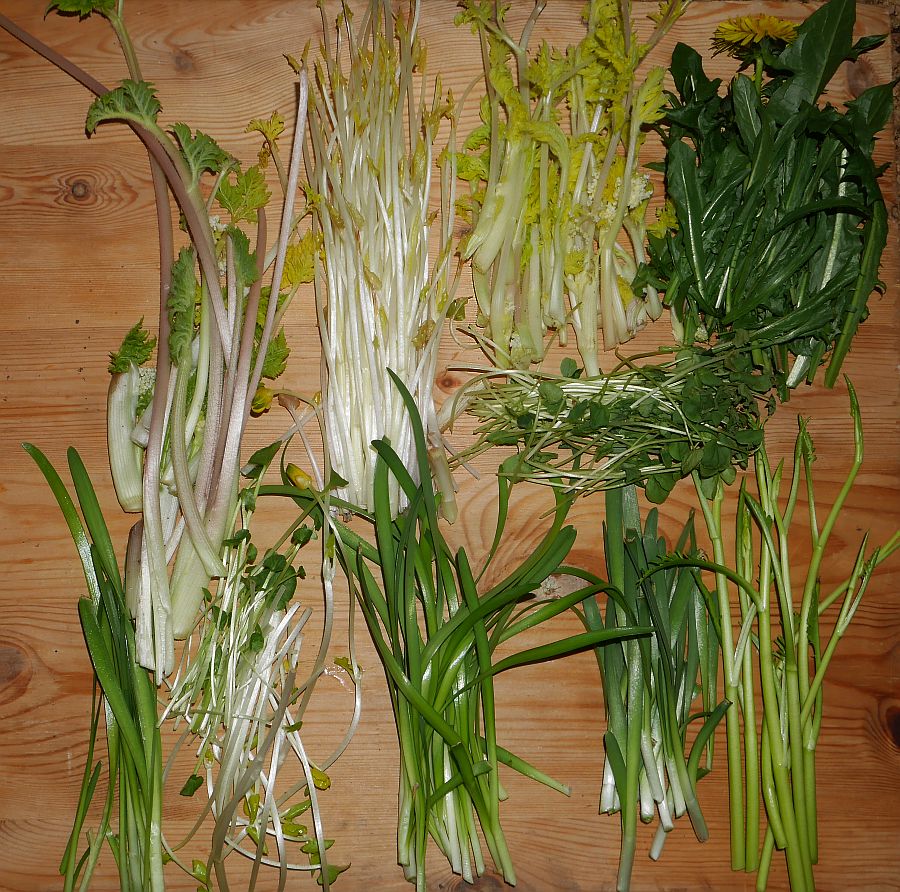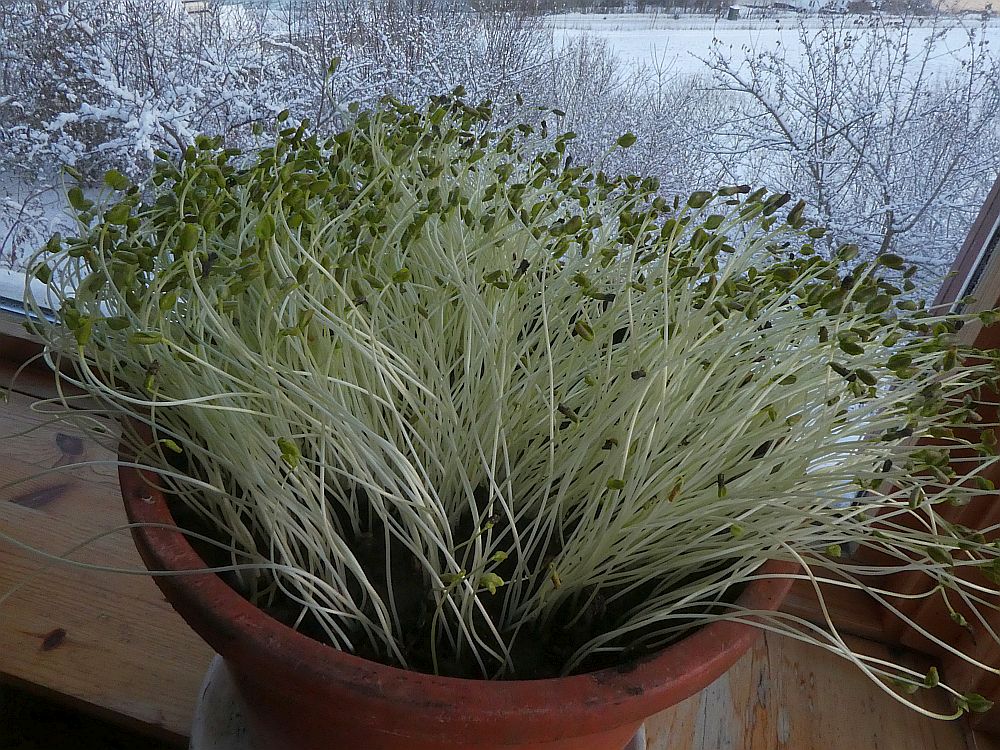After many years of trying, I managed to get a decent crop of dried runner beans / løpebønner* (Phaseolus coccineus). My own garden is a bit too cold due to the shady conditions on a rather windy spot. Last year I grew a selection of 15-20 early varieties sourced from the German gene bank IPK Gatersleben and commercial suppliers which I grew successfully in the sunnier community garden (Væres Venner).
They were made into delicious falafels, accompanied by living room grown Kandahar cress (karse) and wild buckwheat / vill bokhvete and turned into gourmet food with a couple of dandelion flowers from the windowsill!
*In Norwegian, these beans are known usually as blomsterbønner (flower beans) and most often used as an ornamental. I prefer to call them løpebønner to better reflect that these are much more than an ornamental!
Tag Archives: wild buckwheat
Living room veggies; March 2024
Somebody asked me to show how I force veggies indoors in winter, so here you have a link to a short video showing what is available at the moment!
At this time of year, most of our leafy greens used in salads and cooking are either harvested from the forcing pots shown in the video or directly from the cold cellar under the house. Here is a mixture of perennials, biennials and annuals. Still looking for a good perennial chicory for forcing. See the list of plants shown below.
Follow the link to the video.
Witloof Festive Chicory (sikori / julesalat)
Witloof Væres Venner mix (my own selection from the community garden based on several varieties from various gene banks)
Hristo’s onion (Allium flavescens x nutans?)
Kandahar cress (karse) from the Experimental Farm Network (seed harvested in the community garden)
Wild buckwheat / vill bokhvete (seed harvested in The Edible Garden) Garlic bulbil sprouts / spirte hvitløk bulbiller
Nodding onion / prærieløk (Allium cernuum)
Dandelion / løvetann
Dandelion scape, bud and flower omelette
Sorry, but I ceremoniously sacrificed all the dandelion flowers, buds and scapes for a delicious omelette today…and what a wonderful view they had on their last day on earth!
Also in the dandeliomelette was chicory “Witloof” sprouts, an old Finnish shallot, garlic, thyme and the last of the wild buckwheat sprouts (løvetann, sikori,sjalott, hvitløk, timian og vill bokhvete)






Seed saving talk weekend
Thanks to KVANN (Norwegian Seed Savers) colleague Andrew McMillion for coming up to Trondheim to give his seed saving course for local KVANN and Væres Venner Community Garden members!

…and there was time for a Malvik visit, a seed saving and breeding chat, a tour of my seed boxes and a little salad with Witloof chicory and dandelion pizza.
 Salad ingredients: Celery, three chicory varieties, dandelion (including one flower), carrot, Japanese yams, Allium cernuum and Hablitzia (from the garden), Hristo’s onion (Allium flavescens x nutans?), oca (2 varieties), apple (Aroma), horseradish shoots, garlic, chives, wild buckwheat shoots and turnip “Målselvnepe”
Salad ingredients: Celery, three chicory varieties, dandelion (including one flower), carrot, Japanese yams, Allium cernuum and Hablitzia (from the garden), Hristo’s onion (Allium flavescens x nutans?), oca (2 varieties), apple (Aroma), horseradish shoots, garlic, chives, wild buckwheat shoots and turnip “Målselvnepe”

…and my seed archive:
Wild Enoki, Oca and Hablitzia scrambled eggs
Wild Enoki, Oca, Hablitzia, wild buckwheat sprouts, Allium nutans with dandelion, garlic chilis mixed with scrambled eggs for a delicious home grown and foraged lunch!
Enoki is one of the hardiest fungi appearing often midwinter in mild winters. Also known as velvet shank (vintersopp in Norwegian, meaning winter fungus; Flammulina velutipes). Many had been reporting finding this species recently, and I too found some when I visited the botanical garden the other day! It’s difficult to believe that this is the same fungi as Enokitake or Enoki, sometimes offered in supermarkets and one of the most popular cultivated fungi in the Far East. The cultivated fungi are long and white as they are grown in the dark in an enriched CO2 environment which gives longer stalks.

March soba greens
Today it reached an unusually warm 16C here which encouraged the first bumble bees and honey bees out! The picture shows the greens (and whites) used in tonight’s soba (buckwheat noodle) stir-fry:
Hogweed (Heracleum spp.) shoots (far left, from the cellar); top row: Dystaenia takesimana (outside), chicons (chicory shoots; cellar), horseradish shoots (cellar), garlic and Allium scorodoprasum shoots (outside), Allium cernuum shoots (outside); Below from L to R: Dandelion (Taraxacum) shoots from the cellar, ground elder (Aegopodium podograria) shoots (outside), lesser celandine (Ficaria verna), wild buckwheat (Fagopyrum tataricum) seed sprouts (living room), nettle shoots (Urtica dioica), hedge mustard (Alliaria petiolata) and (bottom right) Hablitzia tamnoides shoots.

Forced March Perennial Greens
In order to lengthen the season for harvesting of perennial vegetables, I dig up roots of a selection in the autumn and plant them in garden soil in large buckets (which I have a surplus of through my Allium project, now moved to the botanical gardens). As I explain in the video, all of these can be stored outside exposed to the cold as they are very hardy (minimum about -20C here), but some get a head start by moving into my cold cellar where they start growing slowly in the dark. Welcome to my living room:
These were the forced veggies used one day last week, from top left and across – Heracleum sibiricum (hogweed / bjørnekjeks); Campanula latifolia (giant bellflower / storklokke); Myrrhis odorata (sweet cicely / spansk kjørvel); Taraxacum officinale (dandelion / løvetann); (bottom row): Allium angulosum; Ficaria verna (lesser celandine / vårkål); Allium flavescens and Armoracia rusticana (horseradish / pepperrot); (centre right): wild buckwheat / vill bokhvete shoots – Fagopyrum tataricum)
Wild buckwheat sprouts


